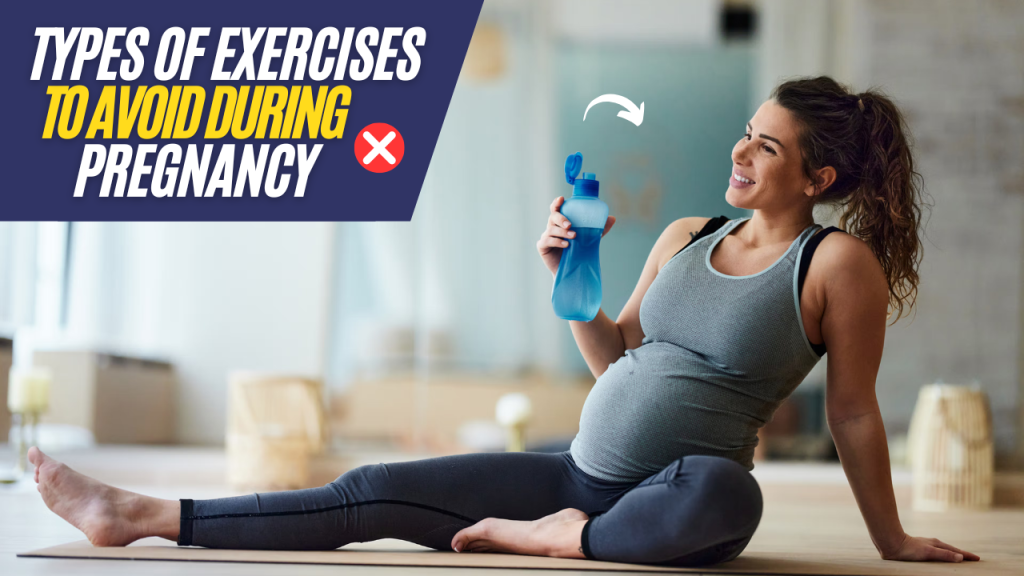Did you know? While exercise during pregnancy is generally encouraged, certain movements can pose hidden risks—especially during those crucial first twelve weeks when your baby is forming vital organs.
When you’re newly pregnant, it’s natural to want to keep up with your usual fitness routine. After all, staying active helps boost energy, reduce stress, and even ease delivery later on. But not all workouts are pregnancy-friendly—especially in the first trimester when your body is working overtime to nurture new life.
In this article, we’ll break down the types of exercises to avoid in early pregnancy, explain why they can be risky, and share some surprising myths you may still believe. Whether you’re a fitness enthusiast or just getting started, this guide will help you exercise smart—right from the beginning.

Why the First Trimester Demands Extra Caution
The first trimester may not show many physical changes on the outside, but inside, major developments are taking place. The placenta is forming, the embryo is implanting, and hormonal shifts are constant. These internal transitions make your body more vulnerable to certain physical stressors.
Interesting Fact: Most miscarriages occur in the first trimester—not necessarily due to exercise, but extra caution during this time is advised.
Types of Exercises to Avoid in the First Trimester
Here’s a closer look at the exercises that experts generally recommend steering clear of in early pregnancy:
1. High-Impact Workouts or Intense Cardio

Why avoid it:
Intense cardio exercises like HIIT, boot camp-style classes, or heavy sprinting can elevate your core body temperature and heart rate too quickly. This can reduce blood flow to the uterus and increase fatigue or dizziness.
Examples to skip:
- Intense jump rope sessions
- High-speed treadmill sprints
- Competitive sports with aggressive pacing
Better alternative: Try brisk walking or low-impact elliptical workouts instead.
2. Abdominal Crunches and Core Twists
Why avoid it:
Crunches and deep twisting movements can strain your abdominal muscles, which are already under pressure due to uterine expansion. This can also increase the risk of diastasis recti (separation of abdominal muscles).
Myth Buster:
“Crunches help strengthen the core for delivery.”
Not true for pregnancy! Core exercises during pregnancy should be gentle and supportive, not aggressive.
Better alternative: Engage in pelvic tilts or use a birthing ball for gentle core activation.
3. Exercises with a High Risk of Falling

Why avoid it:
Balance becomes more unpredictable due to hormonal changes and shifts in your center of gravity. Even if you feel stable now, a fall can be dangerous for you and your baby.
Exercises to avoid:
- Cycling outdoors (especially on uneven terrain)
- Skiing
- Horseback riding
- Gymnastics
Better alternative: Try stationary cycling or prenatal yoga focused on balance.
4. Heavy Weightlifting or Straining

Why avoid it:
Lifting heavy weights can cause excessive intra-abdominal pressure and place stress on ligaments that are loosening due to the hormone relaxin.
Do you know?
Pregnant women produce up to 10 times more relaxin than usual, softening ligaments and joints—making them more injury-prone.
Exercises to skip:
- Deadlifts with high reps or heavy weights
- Overhead presses
- Weighted squats or lunges with poor form
Better alternative: Use resistance bands or light weights with slow, controlled movement.
5. Hot Yoga or Hot Pilates
Why avoid it:
Exercising in hot environments can lead to overheating (hyperthermia), which is linked to neural tube defects in early pregnancy.
Red flag signs:
If you feel flushed, dizzy, or excessively thirsty, stop immediately.
Better alternative: Opt for a cool, well-ventilated room with prenatal yoga classes designed for pregnancy-safe movement.
6. Contact Sports or Team Sports with Collision Risk

Why avoid it:
Any activity that puts you at risk of getting hit in the abdomen is a no-go.
Examples include:
- Soccer
- Basketball
- Martial arts
- Kickboxing
Even recreational versions of these sports can carry unpredictable risk.
Better alternative: Swimming or water aerobics—low impact and soothing for joint pressure.
7. Deep Inversions or Extreme Stretching
Why avoid it:
Stretching too deeply, especially in yoga, can overextend joints and ligaments due to increased flexibility from relaxin.
Examples to avoid:
- Headstands
- Wheel pose
- Splits or extreme hamstring stretches
Better alternative: Stick to gentle stretches and avoid pushing into discomfort or resistance.
Bonus: Common Myths About Pregnancy Workouts—Debunked
“If you were doing it before, it’s fine to continue.”
Not always. Some exercises become unsafe regardless of past fitness levels.
“Exercise can cause miscarriage.”
Normal, low-impact workouts don’t increase miscarriage risk. It’s the wrong type of exercise that could potentially lead to complications.
“You should stop all exercise until the second trimester.”
Unless advised by your doctor, light activity is encouraged in all trimesters.
When to Call Your Doctor
Stop any workout and call your healthcare provider if you experience:
- Vaginal bleeding
- Dizziness or fainting
- Shortness of breath before starting exercise
- Chest pain
- Muscle weakness
- Calf pain or swelling
Final Thoughts
The first trimester can feel like walking a tightrope between staying active and protecting your baby. But avoiding the wrong types of exercises is key to keeping both of you safe. You can also look out at the 10-minute Safe Pregnancy Exercise for the First Trimester.
By understanding what movements are risky and embracing safer, low-impact alternatives, you’ll not only nurture your baby—you’ll also build a strong foundation for a healthy pregnancy journey.
Remember: your body is not just your own anymore. It’s a home for a new life—treat it with the care it deserves.
Frequently Asked Questions (FAQs)
Can I exercise at all during the first trimester of pregnancy?
Yes, most women can and should engage in safe, low-impact exercises during the first trimester. Always consult your healthcare provider before starting or continuing any exercise routine.
What happens if I accidentally did a risky exercise early in pregnancy?
One or two instances usually aren’t cause for panic, especially if you didn’t feel pain or discomfort. However, if you’re concerned or experience unusual symptoms (like bleeding or cramps), consult your doctor immediately.
Are jumping jacks safe in the first trimester?
Jumping jacks are generally discouraged during early pregnancy due to their high-impact nature. They may cause unnecessary strain on joints and increase the risk of imbalance or discomfort.
Is it okay to lift light weights in early pregnancy?
Yes, lifting light weights with proper form is generally safe. Avoid holding your breath, straining, or lifting heavy loads. Focus on controlled movements and listen to your body.
Can I continue yoga in the first trimester?
Prenatal yoga is a great option if tailored to pregnancy. Avoid deep twists, inversions, or poses that compress the belly. Always inform your instructor that you’re pregnant.
Should I stop running in early pregnancy?
If you were a runner before pregnancy and feel comfortable, you may be able to continue with modifications. However, avoid high intensity, long-distance, or uneven terrains. Get clearance from your doctor first.
Are abdominal exercises safe in early pregnancy?
Traditional crunches and sit-ups are not recommended, but gentle core-strengthening moves like pelvic tilts or modified planks may be safe when done correctly.






Good